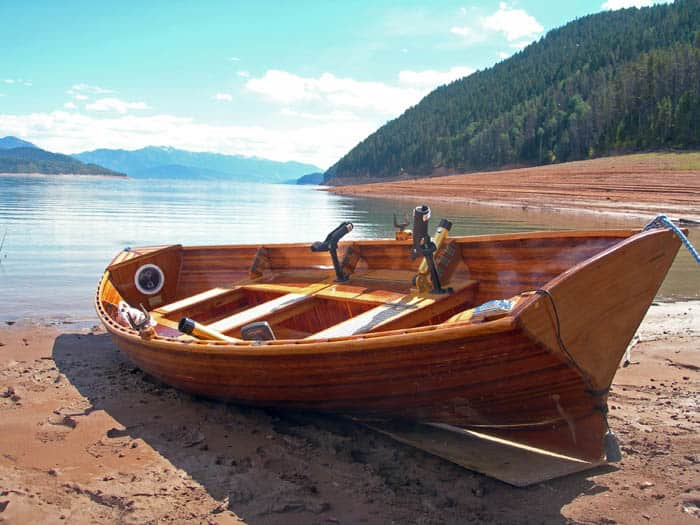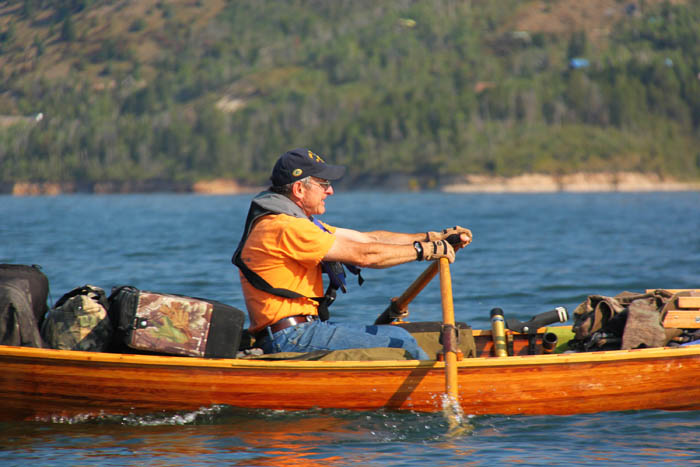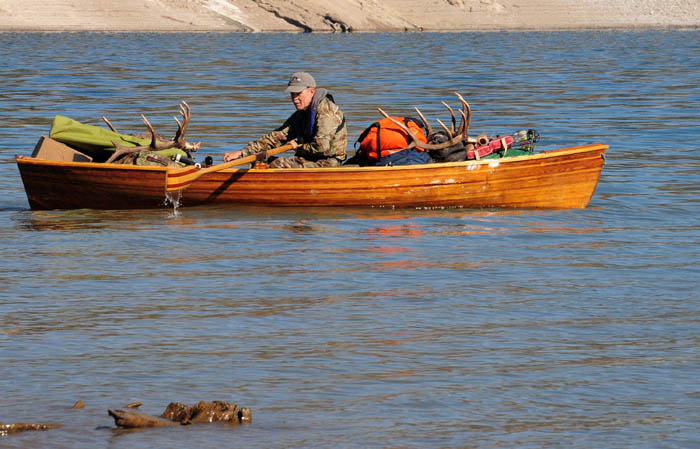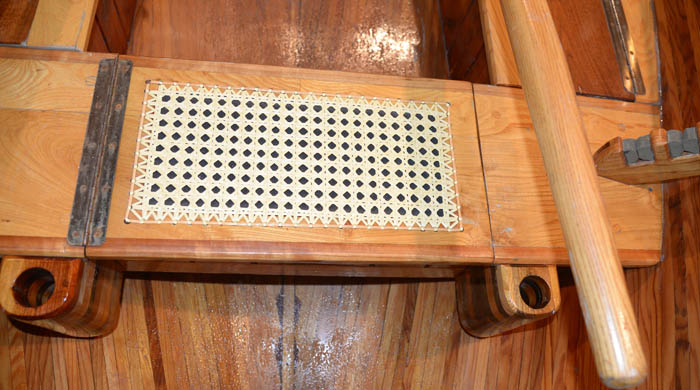Cedar Boats for Hunting and Fishing Combine Beauty and Strength
Patrick Durkin 07.28.15

If you want to insult someone who has built a cedar-strip canoe, kayak, or rowboat, say it’s too delicate for fishing and hunting.
Folks often assume something so gorgeous can’t handle rough stuff. Then again, maybe I thought the same thing in 2006 when I launched my homemade rowboat after two-and-a-half years of on-again, off-again construction. My boat is now in its 10th summer, and it has shaken off enough hard knocks, pounding waves, and inept rowing to convince me it’s as seaworthy as any boat afloat, and more so than one I abandoned long ago.
Granted, it owes much of its strength and durability to fiberglass cloth and epoxy resins protecting its hull, inside and out. And it owes much of its enduring gleam to multiple coats of varnish applied before its launch. Some wooden-boat purists aren’t impressed, I realize, but neither am I charmed by water seeping through seams not yet swollen by the new season.

Then again, perhaps the greatest charm of a light-riding cedar craft is its reliability. As long as you’re fit enough to row or paddle, you’ll get where you’re going. What about my other, more modern boat? I’m forever fixing its livewell, recharging its battery, replacing its bilge pump, upgrading its livewell pump, and hauling it to marinas for engine repairs.
Maybe that’s why I’ve used the cedar boat far more than “the big boat” these past 10 years. It’s hassle-free and far better company.
Plus, when it needs fixing, I can do everything myself. But that says little. Most repairs simply require fine-grit sandpaper and fresh varnish. That’s much less complicated than diagnosing and solving engine problems, two skills beyond my training and instincts.
Recently, though, I completed the boat’s first major repair: re-caning its seats after they wore out from nine seasons of excessive rain, sunlight, and misplaced knees. In case you don’t know about caning seats, we’re not talking about corporal punishment, like 50 lashes; or weird stuff, like Fifty Shades of Grey.
Caning a seat requires endlessly weaving a series of long, slender strips of cane back and forth across an opening, much like that of an old wooden chair. Eventually, you create a strong, pretty webbing that’s sturdy enough to handle any adult posterior.
Caned seats perfectly complement cedar boats, so I never considered covering my seats with cushions when the original caning wore out. Besides, caning is soothing and satisfying artwork. When I was caning my boat seats for the first time back in the winter of 2006, my wife’s cousin watched awhile and said, “It beats therapy, doesn’t it?”

He was onto something. By the time I finished the seats, I knew I’d never do it for pay. Money tends to end the soothing and start the slaving. Nor would I ever again share or farm out the task. That only brings stress.
I won’t mention names, but I taught caning to a certain loved one the first time around, and had to fire her. Why? There’s a fine line between soothing and complacency when caning. She crossed it when ignoring my instructions to lube each new strip of cane after tying it to the previous strip already woven into place.
See, I use plastic cane for the boat seats because I heard and read that it lasts longer outdoors than natural cane. But plastic cane has sharp edges, and you weave it through narrow gaps in previous sections of cane. All those tight fits cause friction as you pull the cane through and snug up each pass. If you don’t keep it lubed, plastic cane cuts into previous sections, weakening each strand with slices resembling paper-cuts.
About a half-hour after my wife’s cousin and I agreed on caning’s therapeutic properties, I stopped to inspect a loved one’s work on the boat’s front seat. I had furtively watched from a few yards away when she tied in a new strand of cane, and noticed she hadn’t applied the mandatory Vaseline.
Sure enough, tiny cuts marked the strands where my caning ended and hers began. That would be no big deal if it meant tearing out a row or two of damaged cane. But the charm of caned seats is that, much like chain, they’re only as strong as their weakest link.

Worse, each strand of cane spans the length of the seat’s opening. As you pull bone-dry plastic cane across the intricate weaves of those spans, you cut every strand it touches. In effect, you cut a series of equally weak links.
I recall turning the unattached seat upside down and then right side up, studying it from every angle, trying to find a way to avoid starting over. We had invested at least five hours of therapy into the seat by that time. I couldn’t let go such a commitment.
But the horse’s leg was broken. I knew what I must do.
Lowering my head, I slouched for the scissors, and quietly stepped from view inside the house. As I snipped all that beautiful weaving into the wastebasket, I imagined a Western movie in which you hear a pained whinny, a lone shot behind the chuckwagon, and a sorrowful cowboy shuffling back to the campfire.
Therapy for one is mere distraction for another.
Fair enough, I guess.
After all, some see beauty and mistake it for frailty.

